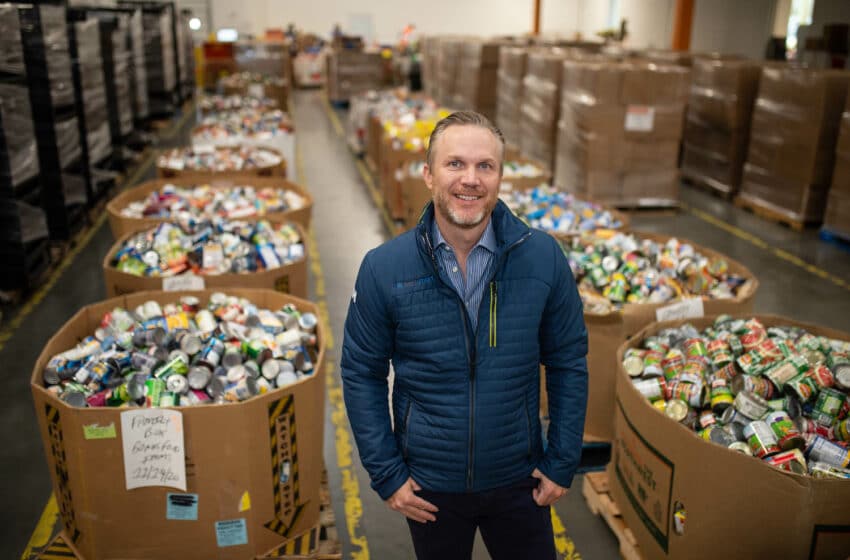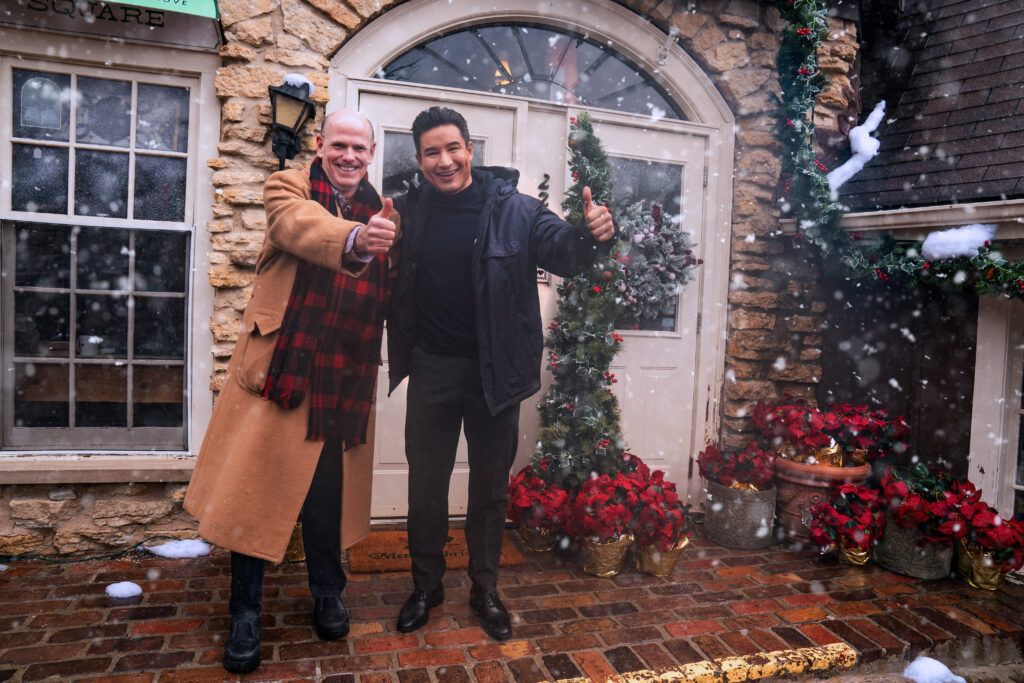Getting Shift Done

Shiftsmart president Patrick Brandt on the rise of shift work and his ingenious COVID-era nonprofit initiative
As a recent issue of this magazine documented, countless Texas companies stepped up and did incredible things during the COVID-19 pandemic. Among them is Dallas-based Shiftsmart, a technology company that helps employers and workers flexibly coordinate shift work.
In the midst of skyrocketing unemployment and statewide lockdowns, Shiftsmart cofounder and president, Patrick Brandt hatched an idea, along with tech investor Anurag Jain. What if Shiftsmart, with its foothold in the world of retail and hospitality, began a nonprofit initiative that paid laid-off and furloughed workers to pick up shifts at the North Texas Food Bank?
That germination of an idea exploded into a huge success. Today, Get Shift Done has provided workers with over a million hours of skilled shifts—and provided more than 60 million meals to families experiencing food insecurity. Get Shift Done was launched with the help of founding supporters that include AccessHealthcare, Communities Foundation of Texas, Mark Cuban, Craig and Kathryn Hall, Lyda Hill Philanthropies, Margot Perot and Family, Sarah and Ross Perot Jr. Foundation, Katherine Perot Reeves and Eric Reeves, Shiftsmart and United Way of Metropolitan Dallas, who were soon joined by national supporters Capital One and When I Work. In March, almost a year after its founding, Get Shift Done was named the #1 most innovative nonprofit of 2021 by Fast Company.
Following is our conversation with Brandt, who discusses the dynamics of modern shift work as well as the ongoing story of Get Shift Done.

Texas CEO: Let’s start at the beginning. How was Shiftsmart founded?
Patrick: Aakash Kumar left Google to start Shiftsmart in 2015 in San Francisco, although he graduated from The University of Texas. Pavan Patel, our CTO, and I joined a few months later as co-founders.
The origin of the company was unique for me, as I had been a CEO of software and internet companies for roughly 20 years and was now joining Aakash, nearly 20 years younger than me. I had always been the young one, and then suddenly, I am the old guy pontificating wisdom my mentors shared with me 20 years prior!
Texas CEO: What was the core concept behind Shiftsmart?
Shiftsmart was born out of the idea that the relationship between the labor force and employers has been asymmetric. People who work on an hourly or project basis have been stuck in a pretty rigid paradigm. You apply for the job, and if you get it, the employer sets your schedule. And if you work more than one job, it’s up to you to figure out how to manage it all and get your shifts covered.
With Shiftsmart, we wanted to allow employers and workers to manage shifts more symmetrically. The platform is designed, first and foremost, to help workers work more fluidly across employers and have more choice in their careers and schedules. When we started the company, we knew it was important to be worker-centric, and we are glad that it brings a lot of benefit to the employers, too.
In our platform, people can sign up on their own, or they can be signed up by an existing employer or a staffing company. It’s free for the worker. They then put in their preference, qualifications and availability. You can think of it like a baseball card. The worker can then find shifts that fit their schedules and skills and juggle shifts across employers.
This way, a person can go to school full-time and pick up part-time work across multiple jobs if they want. Maybe they’ve got to take care of their kids during the day and they want to pick up shifts at night or weekends. Or maybe it’s the opposite. Either way, they can find work that fits their skills and schedule. We believe that this creates a healthier, more reliable, and transparent ecosystem.
At the same time, the employer can use the platform to find workers who meet their needs and see ratings and reliability scores for people. Through that process, we’re able to create the optimal match—the best worker for the employer at the best time and best shift for the worker.
Texas CEO: There’s clearly been an uptick in the gig economy in recent years. Is there a difference between gig workers and shift workers?
Patrick: There is. You have the self-employed gig worker—the rideshare driver, the delivery person, etc.—and you also have employees of companies or staffing agencies who work in shifts. What’s unique about Shiftsmart is that we’re helping both types of worker and both types of employer. So if you run a nursing home facility, for example, you can use the platform to do a better job of scheduling nurses and offering them flex schedules.
A lot of factors have driven the increase in gig work. Part of it is policy changes—for example, overtime rules and the Affordable Care Act, with its cap of 29 hours for part-time work. Part of it is generational changes. And there are of course technology changes as well. In 2016, Uber issued 1.5 million paychecks. By then, Uber had only been around seven years but it was already the third-largest issuer of paychecks, behind McDonald’s and Walmart. People were attracted to the ability to work the hours they wanted and when they wanted.
We began to describe this new group of people who were re-inventing their approach to work as micro-entrepreneurs. The micro-entrepreneur has much more choice about when and where they’re going to work. That creates a higher-quality labor force in general, so it’s not just serving the worker, but also the employer.
Texas CEO: The Biden administration has discussed various policy changes related to the gig economy. How do you anticipate new regulations affecting what you do?
We’ve dealt with policy changes since we started the company and they vary from state to state. State regulations are different from federal ones; and overtime rules, 1099 rules, and so on, are different from one state to the next.
Staying abreast of regulations during any administration is always in the forefront for us. We are dedicated to staying informed and compliant with everything, and that’s a constant and ever-changing responsibility. We do think that the current labor policy doesn’t necessarily meet what the labor force needs and wants. With the rise of Millennials and Gen Z and so many people now working from home, there’s a missing category. Right now, you’re either a full-time worker with a W-2 or you are a contractor and receive a 1099.
Policy will eventually catch up to what the labor force wants. We will always follow changes and continue to place people working in situations that fit their unique needs.
Texas CEO: What effects has COVID had on shift and gig work?
Patrick: I think COVID-19 has been an accelerator to the change that was already happening in the labor market. Before COVID-19, we’d already seen where it was going—that there was going to be a lot more micro-entrepreneurship, as we expected. More people working multiple shifts, with different employers and having a lot more choice.
During COVID-19, a few industries were hit hard—hospitality and retail in particular—and the shift that we predicted in the workforce sped up. We went from about 90,000 workers on our platform at the beginning of 2020 to 400,000 workers in more than 50 countries on our platform at the end of the year. It took us four years to get the first 90,000, but only nine months to get the next 300,000.
In March and April [of 2020], with lots of people getting laid off, we were very fortunate to have this platform that we could scale rapidly to respond to both the changing needs of the workers and the employers. Because of our technology, we were able to manage the growth on the platform without having to dramatically increase our corporate staff.
We were able to meet the needs of many different types of customers. When physical call centers were shut down because of COVID-19, we mobilized flexible call centers that became a rapid growth category for us. We set up call centers for political polling, for the census, and for the SBA’s [Small Business Administration’s] PPP [Paycheck Protection Program]. The SBA’s call centers were getting 10 to 20 times the normal call volume as people tried to get help. The wait times were often over an hour. Fortunately, we could step in with 10,000 hours of agent time and help them with their staffing needs and eliminate wait times. We’ve also created call centers for vaccine scheduling and staffed vaccine distribution sites.
As a result, we were able to keep a lot of people, whose previous jobs had been impacted, working throughout COVID-19. When it comes to the labor force, that ability to flex and have choice—that’s going to become increasingly valuable to people going forward. We also think employers are going to want more opportunity to very quickly flex their workforce up and down.

Texas CEO: How did the Get Shift Done initiative get started?
Patrick: Just like everyone else, those first days of the pandemic really tested us. It’s one thing to say “We are worker-centric,” and it’s another to execute that through something like 2020. Our customer base includes a lot of people in hospitality, retail and other highly affected industries. Almost overnight, people were being furloughed and laid off; this was before shelter-in-place was ordered in Texas.
I distinctly remember that Friday, March 13, when we received the shutdown orders and Texas was in a full-on state of emergency. The outlook for our customer base was not good. That weekend I had a conversation with one of my outside board members and good friend, Anurag Jain, who, at the time, was Board Chairman of North Texas Food Bank and we decided, “Look, we’ve got to do something.” So many workers became suddenly unemployed and stimulus checks weren’t available yet.
Anurag saw that the food bank’s volunteers were cancelling or stopped signing up for shifts due to safety concerns. We decided that weekend to create GetShiftDone.org, a concept that would take out-of-work, displaced employees from the hospitality sector and assign them volunteer shifts in North Texas food banks, and pay them a living wage for their work. The two of us and our companies seed-funded it, and then we raised a few million dollars locally.
On March 19, Get Shift Done staffed our first shifts in the North Texas Food Bank. As workers were arriving that day, Shiftsmart’s Founder and CEO, Aakash Kumar, had his laptop out in the food bank’s warehouse managing our platform and registering new workers and scheduling additional shifts. At the time, we thought it was going to be a 10 or 12-week program but the news spread fast among other food banks and among the retail and hospitality industry. After just 90 days, our workers provided more than 10 million meals for the community.
Soon, other regions asked us to bring the model to them. It had been such a success that we raised more money and expanded across the country. Today, we’ve raised over $15 million of private funding, provided over 60 million meals, and registered over 28,000 workers. Get Shift Done is in 12 regions, including six of the largest metropolitan areas in Texas. The initiative certainly lasted longer than expected and reached more communities than we ever imagined. It was an honor to help both workers and families who needed food and a basic income.





